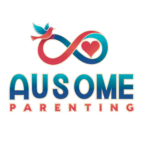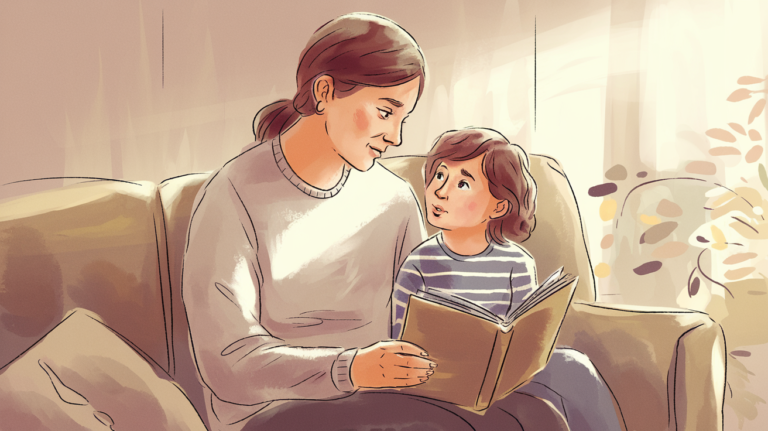In today’s society, discussions surrounding autism and neurodivergence have become increasingly prevalent. As our understanding of Autism Spectrum Disorder (ASD) evolves, it is crucial to delve into the complexities of its diagnosis and the associated conditions that often accompany it. The journey of navigating the world as a neurodivergent individual, particularly for children with autism, requires sensitivity, awareness, and a wealth of resources. In this article, we will explore the concept of differential diagnosis in relation to autism and shed light on the various conditions that are commonly associated with it. By unpacking these topics, we hope to broaden our understanding of autism in children and provide valuable autism resources for those seeking support and guidance.
Autism is more common than some other disorders, for example, only 1 in 100,000 people have childhood disintegrative disorder2. That’s why it’s key to know the exact condition a child has. The right diagnosis leads to the best help for their specific needs.
Autism makes social interactions and certain behaviors challenging. For parents, figuring this out can be tough. But detailed evaluations, using standards from the DSM-V, are crucial. They clarify the child’s condition, avoid wrong diagnoses, and help find the right treatment.

Key Takeaways
- The prevalence of autism globally was estimated to be 1 in 132 individuals in 20101.
- In 2023, around 1 in 36 children in the USA were diagnosed with ASD29.
- Differential diagnosis is crucial to distinguish ASD from similar conditions.
- Childhood disintegrative disorder is 60 times less frequent than autistic disorder2.
- Comprehensive assessments help in understanding specific needs, preventing misdiagnosis, and facilitating targeted interventions.
What is Autism Spectrum Disorder (ASD)?
Autism Spectrum Disorder (ASD) is a condition that affects how a person behaves, communicates, and interacts with others. Difficulty in these areas can range from mild to severe. Knowing about these struggles is important for offering the right support.
Definition and Key Characteristics of Autism Spectrum Disorder
The DSM-5 says ASD involves ongoing problems with social communication and behavior. Kids might struggle to look others in the eye, keep up a chat, or play pretend. They may find it hard to make friends and often enjoy doing things by themselves.
Boys are more likely to have ASD than girls. Studies show34 this pattern. Also, if a family already has a child with ASD, there’s a higher chance another child will also have it3. Parents should know this to get help early.

Early Signs of Autism in Children
Spotting autism signs early can help kids get the support they need sooner. Early signs include not responding to their name, avoiding eye contact, and talking late. These signs show up from 18 months to 3 years old, a key time for getting help4.
Children with ASD may repeat actions like hand-flapping or rocking, or words and phrases. Understanding these signs helps in managing care for a child’s unique needs.
The Role of Genetics and Environmental Factors in Autism
ASD’s development involves both genetics and environment. Research with twins shows genetics plays a big part. Conditions like Fragile-X increase ASD risk5. Genetic testing can sometimes find the cause.
Things like toxins before birth, serious infections, and problems during birth also increase ASD risk5. More kids are being diagnosed with ASD. This might be due to better spotting of the condition and a true rise in cases3.
It’s key to understand genetics and environment effects to support a child well. Parents aware of these factors can seek timely help for their child’s needs.
The Importance of Accurate Diagnosis
Getting autism diagnosis right is key to finding the best help and support. The rise in autism cases worldwide, from 0.62% in 2012 to 1.0% in 2021, highlights the growing need for accurate diagnoses6.
Challenges in the Diagnosis
Diagnosing autism is tough because symptoms can be similar to other conditions7. While some kids might talk and think well, others might not talk much and show little emotion7. This makes it hard to figure out if it’s autism. Recognizing autism in older kids and teens adds extra challenges8.

Screening Tools and Their Limitations
Screening tools are crucial for spotting autism early, especially in toddlers8. But, they’re not perfect and can mistakenly identify kids who don’t have autism. For example, 7.4% of children in Sri Lanka showed early signs of autism, stressing the importance of careful screening6.
The Need for Comprehensive Evaluation
A thorough check-up is needed for a correct autism diagnosis. This can start as young as 12 months and continue into adulthood7. Brain function tests help understand a person’s thinking, memory, and attention7. Tests for genetic markers can also help identify autism7.
To grasp the full picture, let’s look at autism rates and diagnosis challenges worldwide:
| Country/Region | Prevalence Rate | Diagnostic Challenges |
|---|---|---|
| Mexico | 0.87% | Accessibility to comprehensive evaluations |
| South Thames, UK | 1% | Variability in autism symptoms |
| United States | 1 in 45 children | False positives in early screenings |
| Sri Lanka | 1.07% among children aged 18 to 14 months | Recognizing red-flag signs early |
Understanding how complex autism diagnosis is shows why getting it right matters. Early help and tailored support can make a big difference for kids with ASD.
Differential Diagnosis in Autism Spectrum Disorder
Knowing the difference in autism spectrum disorder (ASD) is key for proper care and treatment. It helps avoid wrong autism diagnosis in kids and the negative labels from other similar symptoms conditions.
Commonly Confused Conditions
Many conditions get mixed up with autism, making diagnosis harder. ADHD and anxiety disorders share autism-like symptoms, such as trouble with attention and social skills. Intellectual Disabilities and Global Developmental Delay also often get confused with ASD, adding to the challenge9. Kids with Intellectual Disabilities might act in ways similar to those with ASD, and kids with ADHD might have issues being hyper or focusing, which can seem like autism symptoms9.
Importance of Differential Diagnosis
Getting the diagnosis right is vital for kids to get the support they need. With more ASD diagnoses nowadays, fewer kids are wrongly labeled with Intellectual Disability or Global Developmental Delay9. Autism screening tools are very sensitive to catch as many autism cases as possible, even if it means some might not actually have ASD after a full check-up9. This careful checking is important to find all autism cases.
Case Examples Illustrating the Complexity
Real stories show how tricky it can be to figure out the right diagnosis. Take Austin, who showed repetitive actions that seemed like autism but were actually due to Intellectual Disability9. Cody’s behavior looked like ASD at first, but a deeper look found ADHD was the real problem9. Maxine’s case was even more complex; what looked like autism was really the result of her tough past9. These examples show why it’s important to tell ASD apart from other issues for the best care.
| Condition | Key Features | Common Confusions with ASD |
|---|---|---|
| Intellectual Disability | Marked by significant limitations in intellectual functioning and adaptive behavior | Repetitive behaviors, communication difficulties |
| ADHD | Characterized by inattention, hyperactivity, and impulsivity | Attention difficulties, social communication challenges |
| Anxiety Disorders | Involve excessive fear or worry | Social withdrawal, avoidance of social interactions |
| Global Developmental Delay | Significant delays in multiple areas of development | Social communication deficits, restrictive and repetitive behaviors |
Autism in Children: Recognizing the Signs and Symptoms
It’s crucial for parents to be alert to the signs of autism and understand the symptoms your child might show.
Behavioral Signs to Watch For
Look out for behaviors like preferring routine, avoiding eye contact, and missing developmental steps10. By 12 to 18 months, many kids with autism might struggle with pretend play and copying actions10. Often, they display speech and behavior differences, from delayed speech to struggles with non-verbal cues10. Most autistic children show changes in how they talk, from not speaking at all to using words wrongly10
Social Communication Difficulties
Autistic kids typically face challenges in social interactions, struggling with social hints10. Early on, they might not react to pointing or seem to ignore such gestures11. Language delays and speech differences affect both their nonverbal and verbal communication11. The American Academy of Pediatrics urges screening for autism at 18 and 24 months to start early help11. Early help greatly boosts a child’s social and communication skills12.
Specific Interests and Repetitive Behaviors
Autism often shows through intense focus on certain subjects or repeating actions like hand-flapping10. Spotting signs like behavior changes, special interests, and social difficulties early can lead to quicker help, enhancing a child’s progress12.
Associated Conditions and Co-occurring Disorders
Autism Spectrum Disorder (ASD) often comes with other conditions. This makes diagnosis and treatment complex. Understanding these extra challenges is key to helping those with autism fully.
ADHD and Autism
ADHD and autism often appear together. In fact, 30-80% of kids with autism also have ADHD13. They may have trouble with staying still, paying attention, and acting without thinking. Spotting the main problem can be tough. This shows the importance of careful evaluation.
Anxiety Disorders and Autism
A lot of kids with autism also deal with anxiety. Up to 42% suffer from it14. It can make social situations even harder for them. Managing both autism and anxiety is critical in any care plan. New or socially intense experiences can raise their anxiety, affecting learning and social interaction.
Intellectual Disabilities and Learning Disorders
Between 20-30% of kids with autism have intellectual disabilities or learning delays13. This can affect how autism symptoms show and make school harder. Knowing this helps create better education plans and autism therapy.
Nearly 78% of kids with ASD have a mental health issue, and about half have two or more15. Behavioral issues, anxiety, and ADHD are common. Kids with ASD may also have stomach problems and trouble sleeping14.
| Condition | Prevalence in Children with ASD |
|---|---|
| Behavior/Conduct Problems | 60.8%15 |
| Anxiety | 39.5%15 / 40-60%13 |
| ADHD | 48.4%15 / 30-80%13 |
| Intellectual Disabilities | 20-30%13 |
| Feeding and Eating Problems | 70%14 |
| Chronic Sleep Problems | 50-80%14 |
It is crucial to recognize these and below conditions along with autism. This helps us give better targeted therapy. It builds a stronger support system for the child and their family. Addressing these issues lets kids with autism achieve their best.
Social anxiety disorder
Social anxiety disorder, also known as social phobia, is a mental health condition characterized by an intense fear of social situations. It affects millions of people worldwide and can greatly impact one’s quality of life. Individuals with social anxiety disorder often experience overwhelming worry and self-consciousness in social interactions, leading to avoidance of social settings and potential isolation. People with ASD may experience social anxiety, but they also have greater impairments in initiating and maintaining social communication and reciprocal social interactions than is typically seen in social anxiety disorder. Persistent, restricted, repetitive, and inflexible patterns of behavior, interests, or activities are not signs of social anxiety disorder. Autistic people are more likely to exhibit anxiety disorders than their neurotypical peers. If the diagnostic criteria for both disorders are met, patients receive a dual diagnosis.
Selective mutism
Selective mutism is a complex and often misunderstood condition that affects many individuals, particularly children. It is characterized by an individual’s inability to speak in certain social situations, despite having the ability to speak in other settings. This can lead to significant barriers in communication and social interaction for those affected.
While selective mutism is not necessarily related to autism, it is more commonly seen in individuals on the autism spectrum. Therefore, it is important for parents and caregivers of children with autism to be aware of this condition and its impact on their child’s development. In ASD, communication difficulties may be observed in some social situations/contexts however deficits in initiating and maintaining social communication and social interaction, as well as persistent, restricted, repetitive, and inflexible patterns of behavior, interests, or activities, are evident in all situations and contexts.
Obsessive-compulsive disorder (OCD)
Obsessive-compulsive disorder (OCD) is a mental health condition that affects millions of people worldwide. It is characterized by intrusive thoughts and repetitive behaviors that individuals feel compelled to perform in order to alleviate anxiety. OCD can be a debilitating condition, affecting every aspect of a person’s life, from relationships and work to daily activities. Fortunately, there are resources available to help individuals with OCD manage their symptoms and lead fulfilling lives.
Unlike autistic people, people with OCD most often consciously resist their impulses to engage in compulsive behaviors (e.g., by performing alternative tasks), although adolescents and adults with autism spectrum disorder may also attempt to suppress specific behaviors that they believe are socially undesirable. ASD can also be distinguished from OCD by the characteristic deficits in initiating and maintaining social communication and reciprocal social interactions, which are not features of obsessive-compulsive disorder. Research suggests that in some cases, people with ASD also have a comorbid diagnosis of OCD.
Reactive attachment disorder
Reactive attachment disorder (RAD) is a complex and relatively uncommon condition that affects children and young people who have not formed a strong bond with their primary caregiver. This disorder can have serious consequences for the child’s emotional, social, and behavioral development. RAD is often caused by early neglect or abuse, and it can present challenges in creating meaningful relationships later in life.
Recognizing the signs of reactive attachment disorder is crucial for early intervention and support. Children with RAD may exhibit difficulty in forming emotional connections, display inappropriate or excessively clingy behavior, and have trouble regulating their emotions. They may also struggle with trust issues and have difficulty understanding social norms and boundaries. Some people raised in conditions of severe institutional deprivation exhibit autistic traits, including difficulties in social reciprocity and restricted, repetitive and inflexible patterns of behaviour, interests or activities. However, when a child is transferred to a more nurturing environment, there is a significant improvement in social interaction and communication, and a decrease in self-stimulation and repetitive behavior.

Eating disorder associated with avoidance and restriction of food intake
Eating disorders, such as anorexia nervosa and avoidant/restrictive food intake disorder (ARFID), can have devastating effects on both physical and mental health. While these disorders can affect individuals of any age or gender, recent research has highlighted a correlation between eating disorders and individuals with autism spectrum disorder (ASD). Understanding this association is crucial in order to effectively address and treat these co-occurring conditions.
ARFID, specifically, is characterized by a persistent refusal to eat food based on sensory sensitivities, fear of negative experiences, or lack of interest in food. This can lead to severe nutritional deficiencies and negatively impact growth and development. Individuals with ASD may be especially susceptible to ARFID due to their sensory sensitivities and rigid thinking patterns.
In addressing these eating disorders associated with avoidance and restriction of food intake in individuals with ASD, it is essential to have a multidisciplinary approach. This may involve a combination of therapy, nutrition counseling, and medication, depending on each individual’s specific needs. Autism treatment centers and resources that specialize in eating disorders can be invaluable in providing comprehensive care and support tailored to these co-occurring conditions.
Oppositional defiant disorder
Oppositional Defiant Disorder (ODD) is a behavioral condition that primarily affects children and adolescents. It is characterized by a persistent pattern of disobedient, argumentative, and defiant behavior towards authority figures. ODD often leads to frequent conflicts with parents, teachers, and other individuals in positions of authority. While it is normal for children to display some level of oppositional behavior during their development, ODD involves more extreme and persistent patterns that disrupt daily functioning.
Children diagnosed with ODD may exhibit symptoms such as frequent tantrums, refusal to comply with rules or requests, excessive arguing, and a tendency to deliberately annoy or provoke others. The causes of ODD are not yet fully understood, but research suggests that a combination of genetic, environmental, and neurological factors may contribute to the development of the disorder. Early intervention and appropriate management strategies are crucial in helping children with ODD to develop healthier coping mechanisms and improve their overall functioning.
Disruptive behavior with aggressive outbursts may also be seen in autistic children. In individuals with ASD, such outbursts of aggression and/or disruptive behavior are often associated with a specific trigger (e.g., a change in routine, unpleasant sensory stimulation/ sensory overload , anxiety, or rigidity) and do not reflect an intent to behave in a defiant, provocative, or angry manner, which is more characteristic of oppositional defiant disorder.
Personality disorder
A personality disorder involves a disruption in how a person perceives and understands themselves, others, and the world around them. This manifests in maladaptive patterns of thinking, emotional experience, expression, and behavior. These patterns are relatively inflexible, appear in various personal and social situations, remain stable over time, and last for a long duration. They lead to significant problems in psychosocial functioning, particularly in interpersonal relationships. Some individuals with autism spectrum disorder (ASD) may show similar difficulties in forming and maintaining relationships due to limited social communication skills and reciprocal social interactions. However, unlike ASD, personality disorders do not feature persistent restricted, repetitive, and inflexible patterns of behavior, interests, or activities emerging in early childhood.
Tic disorders, including Tourette’s syndrome
Primary tic disorders, such as Tourette’s syndrome, involve sudden, rapid, irregular, and repetitive movements or vocalizations. These may resemble the repetitive and stereotyped motor behaviors seen in autism spectrum disorders (ASD). However, unlike ASD, tics tend to be less stereotyped, often come with a feeling of premonition, do not last as long, typically start later in life, and are not perceived as calming by the individual experiencing them.
Neurological diseases and other medical conditions
In some children with autism spectrum disorder, there’s a loss of previously acquired language and social communication skills during their second year of life. This rarely happens after the age of three. Neurological diseases and other medical conditions associated with developmental regression—like acquired epileptic aphasia or Landau-Kleffner syndrome, autoimmune encephalitis, and Rett syndrome—are distinguished from autism by early histories of normal social and language development and specific neurological characteristics that are not typical of autism.
Motor coordination disorders
Some individuals with autism may be hesitant to engage in activities requiring complex motor skills, such as ball sports, likely due to a lack of interest rather than an impairment in motor coordination. Nonetheless, motor coordination disorders and autism can coexist, and both conditions can be diagnosed if necessary.
Stereotypic Movement Disorder
Stereotypic movement disorder is characterized by repetitive, stereotyped, seemingly purposeless (and often rhythmic) movements that start early in development. While these stereotyped movements are common in autism spectrum disorder, if they are severe enough to require additional clinical attention—such as in cases of self-injury—then a separate diagnosis of stereotypic movement disorder might be appropriate.
Genetic Disorders
Approximately 10-15% of children with autism have identified genetic disorders like fragile X syndrome, Angelman syndrome, tuberous sclerosis, and duplication syndrome 15, among other chromosomal abnormalities. With advances in genetic testing becoming more accurate and accessible, this percentage is rapidly increasing. Identifying these genetic disorders is crucial, as they may come with additional medical issues requiring further medical care.
Seizure Disorders and Epilepsy
Roughly 39% of individuals with autism also have a seizure disorder or epilepsy. The incidence is higher in children with identified genetic syndromes and cognitive impairments. Neurologists and epileptologists manage patients with both autism and epilepsy according to the same standards of care as for neurotypical children. If there are challenges in performing an electroencephalogram (EEG), a behavioral specialist can create a tailored program to make the procedure more predictable and understandable for the child, thereby reducing frustration, anxiety, and the likelihood of unwanted behavior.
The Role of Comprehensive Diagnostic Assessments
Comprehensive autism diagnostic assessments are crucial for understanding a child’s behavior, communication, and social skills. They include many parts, giving a complete view of the individual’s strengths and challenges. Experts suggest two main evaluations: a comprehensive needs assessment and a diagnostic evaluation16.
Components of an Assessment
Autism assessments often have cognitive and language tests, adaptive behavior assessments, and structured observations. A team of experts like pediatricians and psychologists work together in these evaluations16. Their goal is to map out the individual’s strengths and weaknesses. For example, cognitive testing sheds light on how a child thinks and solves problems17.
Instruments and Tools Used
For an accurate ASD diagnosis, various tools are used. The ADOS-2, ADI-R, and MIGDAS-2 are key for in-depth understanding16. Screeners like the M-CHAT and STAT are starting points before doing more detailed tests17. However, the ADI-R can take a long time, up to two hours, which is a challenge in clinics17.
Interpreting Assessment Results
Experts who know how to tell ASD apart from other developmental issues interpret the results. Skilled clinicians use these findings to make a precise diagnosis17. They consider feedback from parents, teachers, and what they see in school observations17. Getting an early, correct diagnosis is key. It greatly helps in improving communication, learning, and social skills18.
The Latest Research on Autism Spectrum Disorder
The world of autism research is always changing. It brings us new knowledge and fresh ways to help those with ASD. In 2022, autism research got $100 million from the NIH. This happened as research activities began to pick up again after being hit by the pandemic23. The money is going into vital studies. They look at genes and the environment to better understand ASD.
Recent Studies and Findings
Recent discoveries reveal an interesting trend. Younger kids in their school year are more often diagnosed with ADHD than the older ones24. This shows we need better ways to diagnose autism. New eye-tracking technology could make diagnosing autism earlier and more precise24. Researchers have found five new gene variants as well. These are linked to mental health issues other than ASD, showing how complicated autism genetics are23. One groundbreaking study found that some non-verbal autism sufferers can still read well, which shows there’s a lot of variety in autism24.
Innovative Approaches to Treatment
New ASD treatments are in the works, using tech like virtual reality and machine learning. The drug propranolol, used for high blood pressure, seems to help with autism-related anxiety24. Techniques where parents help with treatment are giving good results, but there’s room to make them better23. Research also looks at microglia cells in the brain. These cells may affect how brain cells talk to each other and their structure, playing a role in ASD23.
Gaps in Current Research and Future Directions
Despite our progress, gaps in autism knowledge remain. For instance, more minorities are being diagnosed with autism than white kids. This suggests we need approaches that work for every culture25. Research also shows the big role of siblings in the lives of those with autism. This could lead to new kinds of support23. Moreover, three-quarters of autism cases are identified by age three. Yet, we need to keep working on better early diagnosis tools25.
Conclusion
Understanding Autism Spectrum Disorder (ASD) is crucial for promoting awareness and accepting neurodiversity. ASD includes a range of conditions with different symptoms, starting ages, and related disorders. No behavior always shows autism, as it varies widely among children and changes over time26. This means we need careful diagnosis and specific help to get better results. For instance, experts can reliably diagnose ASD in 2-year-olds, which is vital. Early spotting and diagnosis lead to a better reaction to treatments26.
Talking about autism means knowing that autistic people often face the same health issues as others but might have special needs due to autism or other conditions27. Many families tell me about the need for specific services and starting help early. Kids with ASD need different learning methods because of their communication and social challenges26. Problems like tantrums and aggression are common, showing the importance of unique support26.
Accepting different ways of thinking makes our communities richer and more inclusive. Continuing research, education, and advocating are key to helping people with autism and their families well. For example, knowing that 30-50% of people with ASD also have ADHD symptoms helps us understand these complex conditions better. This highlights the importance of thorough support networks28. When we raise awareness and help those with ASD, everyone benefits from a more welcoming society.
Frequently Asked Questions about Autism Diagnosis
What is Autism Spectrum Disorder (ASD)?
Autism Spectrum Disorder (ASD) is a condition that affects how a person communicates and interacts with others. It also includes restricted and repetitive behaviors. These symptoms appear in early childhood and can greatly vary. Getting a thorough diagnosis is key to help those with ASD.
What are the early signs of autism in children?
Early signs of autism include not responding to their name, making little eye contact, and delayed speech. Children might struggle with social interactions, show repetitive behaviors, and prefer routine. Noticing these signs early can lead to an evaluation by a professional.
How are genetics and environmental factors related to autism?
Genetics play a big role in autism, as studies with twins have shown. But, things in our environment can also influence autism. These two aspects work together in complex ways, making early screenings vital.
Why is an accurate autism diagnosis important?
Getting the right diagnosis for autism matters because it leads to the right help and support. A wrong diagnosis means the wrong help and possible stigma. Assessments that look at behavior, thinking, and communication ensure a correct diagnosis.
What are the common challenges in diagnosing autism?
Finding out if someone has autism can be hard. This is because autism’s traits can look like those in other conditions, such as ADHD or anxiety. Psychological tests help, but they aren’t enough on their own. Experts need to do a full assessment for a clear diagnosis.
What is differential diagnosis in the context of autism?
Differential diagnosis means telling ASD apart from other issues with similar signs. This step is very important for correct treatment. Conditions like Intellectual Disabilities, ADHD, and Anxiety Disorders often get confused with autism.
What behavioral signs should I watch for if I suspect my child has autism?
Watch for signs like not making eye contact, not wanting to play with other kids, and doing the same things over and over again. If you see these signs, it might be time to talk to a doctor.
What other conditions commonly co-occur with autism?
Autism often comes with other conditions such as ADHD, Anxiety Disorders, and Intellectual Disabilities. It’s important to recognize these so that everyone gets the right support and treatments.
What does a comprehensive diagnostic assessment for autism include?
An in-depth assessment for autism looks at how a person thinks and communicates. It also checks how they handle daily activities, along with structured observations. All this information helps understand the person’s strengths and struggles.
What is the latest research on Autism Spectrum Disorder?
Recent studies on autism are looking into genetics, brain scans, and how things before birth affect people. New treatments, like ones using technology, are being tested. Yet, there’s still more to learn about how autism changes over a person’s life, guiding new research.
Source Links
- Autism Spectrum Disorders: Diagnosis and Treatment – Autism Spectrum Disorders – https://www.ncbi.nlm.nih.gov/books/NBK573609/
- Autism Spectrum Disorder – StatPearls – https://www.ncbi.nlm.nih.gov/books/NBK525976/
- Autism spectrum disorder – Symptoms and causes – https://www.mayoclinic.org/diseases-conditions/autism-spectrum-disorder/symptoms-causes/syc-20352928
- What Is Autism Spectrum Disorder (ASD)? – https://my.clevelandclinic.org/health/diseases/8855-autism
- Autism Spectrum Disorder in Children – Health Encyclopedia – https://www.urmc.rochester.edu/encyclopedia/content.aspx?ContentTypeID=90&ContentID=P02556
- Early Diagnosis of Autism Spectrum Disorder: A Review and Analysis of the Risks and Benefits – https://www.ncbi.nlm.nih.gov/pmc/articles/PMC10491411/
- Diagnosing Autism Spectrum Disorder in Children – https://nyulangone.org/conditions/autism-spectrum-disorder-in-children/diagnosis
- Autism Spectrum Disorder – https://www.nimh.nih.gov/health/topics/autism-spectrum-disorders-asd
- Differential Diagnosis of Autism – https://www.ohsu.edu/sites/default/files/2020-12/Managing_Autism_Phelps.pdf
- Tips for Recognizing Autism in Kids – https://www.verywellhealth.com/autism-in-children-4013636
- 3 Early Signs of Autism Spectrum Disorder (ASD) – https://www.healthychildren.org/English/health-issues/conditions/Autism/Pages/Early-Signs-of-Autism-Spectrum-Disorders.aspx
- Signs of autism | Autism Speaks – https://www.autismspeaks.org/signs-autism
- Conditions that can occur with autism – https://raisingchildren.net.au/autism/learning-about-autism/about-autism/conditions-that-occur-with-asd
- Medical conditions associated with autism | Autism Speaks – https://www.autismspeaks.org/medical-conditions-associated-autism
- Autism and Co-occurring Conditions in Children – https://autism.org/autism-mental-health/
- Autism diagnosis for children: a guide – https://raisingchildren.net.au/autism/learning-about-autism/assessment-diagnosis/autism-diagnosis
- What Should an Evaluation for Autism Look Like? – Child Mind Institute – https://childmind.org/article/what-should-evaluation-autism-look-like/
- Why Is It Important to Get a Diagnosis for Autism? – https://www.empowerbh.com/blog/why-is-it-important-to-get-an-autism-diagnosis/
- Case report: Co-occurring autism spectrum disorder (Level One) and obsessive-compulsive disorder in a gender-diverse adolescent – https://www.ncbi.nlm.nih.gov/pmc/articles/PMC10227521/
- Differential Diagnosis of Autism Spectrum Disorder and Post Traumatic Stress Disorder: Two Clinical Cases – https://www.mdpi.com/2077-0383/7/4/71
- Intervention and Therapies | Autism Society – https://autismsociety.org/resources/intervention-and-therapies/
- Autism Treatments, Interventions, and Therapy Options – https://www.helpguide.org/articles/autism-learning-disabilities/autism-treatments-therapies-interventions.htm
- Autism Research in 2022 – Autism Science Foundation – https://autismsciencefoundation.org/autism-research-in-2022/
- Autism News – https://www.sciencedaily.com/news/mind_brain/autism/
- What Is the Latest Research on Autism? – CHC Resource Library | CHC | Services for Mental Health and Learning Differences for Young Children, Teens and Young Adults | Palo Alto, San Jose, Ravenswood – https://www.chconline.org/resourcelibrary/what-is-the-latest-research-on-autism/
- 16 Conclusions and Recommendations | Educating Children with Autism – https://nap.nationalacademies.org/read/10017/chapter/18
- Autism – https://www.who.int/news-room/fact-sheets/detail/autism-spectrum-disorders
- Autism Spectrum Disorders: Etiology and Pathology – Autism Spectrum Disorders – https://www.ncbi.nlm.nih.gov/books/NBK573613/
- Autism Prevalence Higher, According to Data from 11 ADDM Communities – https://www.cdc.gov/media/releases/2023/p0323-autism.html


